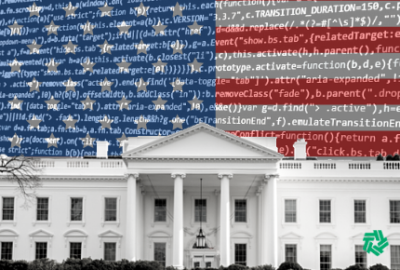Federal AI task force outlines ‘equitable future’ for R&D resources
A White House-led task force is outlining its vision to make artificial intelligence research tools and data more accessible to a broader community of researchers.
A White House-led task force is outlining its vision to make artificial intelligence research tools and data more accessible to a broader community of researchers
The task force behind the National AI Research Resource (NAIRR) issued an interim report Wednesday outlining how the AI data-and-research hub can put federal AI resources in the hands of more U.S. researchers. A final report is expected this November.
The task force, co-chaired by the White House Office of Science and Technology Policy (OSTP) and the National Science Foundation, envisions NAIRR as a shared national cyberinfrastructure that will allow greater access to federal AI research, high-performance computing capabilities, data sets and testbeds.
Private-sector partners would also have the ability to make resources available through the NAIRR portal.
Lynne Parker, the deputy U.S. chief technology officer and director of OSTP’s National AI Initiative Office, said the interim report marks the “first step toward a more equitable future for AI R&D in America.”
“It’s a future where innovation can flourish, and the promise of AI can be realized in a way that benefits all Americans,” Parker said.
Manish Parashar, director of NSF’s Office of Advanced Cyberinfrastructure, said the NAIRR will be run by a single, non-governmental management entity.
The task force recommends that several federal agencies leading AI research should be funded to work cooperatively and support NAIRR’s resources and management.
“These federal agencies would make new and existing cyberinfrastructure resources relevant for AI R&D available via the NAIRR,” Parashar said.
NSF, the Energy Department and the National Institutes of Health rank among the top spenders on AI research in the civilian federal government.
The NAIRR would primarily serve AI researchers and students based in the U.S. who are pursuing foundational AI research.
The NAIRR taskforce is a congressionally directed federal advisory committee authorized by the National AI Initiative Act. Members include AI experts from the Energy Department and National Institute of Standards and Technology, as well as top technology companies and universities.
The NAIRR seeks to lower the barriers to participate in AI research, and allow more researchers to get involved in AI R&D.
AI research relies on access to large amounts of computational power and data. Parker said this demand for resources often limits this research to large technology companies and well-resourced universities.
“AI is transforming our world, and a growing resource divide between those who have access to the resources needed to pursue cutting-edge AI and those who don’t threatens our nation’s ability to cultivate an AI research community and workforce that reflects America’s rich diversity. It could also prevent us from harnessing AI in a manner that benefits all Americans,” she said.
Parker said the NAIRR promotes more equitable access to federal AI resources, and opens up opportunities for individuals that would not otherwise have access to engage in this kind of research.
“To prevent unintended consequences or disparate impacts from the use of AI, it matters who is doing the AI research and development,” Parker said.
The interim report outlines four main goals for the NAIRR — to spur innovation, increase the diversity of AI talent, increase capacity for AI research in the U.S. and advance trustworthy AI.
The task force released a request for information seeking feedback on its interim report. OSTP and NSF will also host a public listening session on June 23.
Parker said that the task force is particularly interested in hearing who perhaps have not been as engaged in AI research and development
The task force plans to release a second report in November that provides a detailed roadmap and implementation plan for the NAIRR.
“This interim report is its findings and recommendations on sort of the ‘what’ that we think the NAIRR should be all about. But the details on exactly how we achieve all of these high-level recommendations are something that will be left for the final report,” Parker said.
Parashar said NAIRR will primarily host open scientific data, which has fewer constraints around sharing, but he said the task force recognizes there will be some cases where data sharing agreements are needed.
“Overall, it’s really looking at setting up the incentive mechanisms, where the data providers find value in sharing data and being able to provide a broader accessibility to data and amplify the impact of that data, as well as creating this value ecosystem around data, so that it becomes more natural to be able to share data broadly,” Parashar said.
The Federal Data Strategy and the Foundations for Evidence-Based Policymaking Act direct agencies to make federal data more accessible to the public, businesses, and researchers while upholding data privacy.
The Biden administration also sees greater access to federal data as a more urgent priority since the start of the COVID-19 pandemic. OSTP on Thursday issued guidance outlining ways to make federally funded research have a greater benefit for underrepresented communities.
“One of the lessons of the COVID-19 pandemic for data sharing is that public access policies can benefit all of America,” OSTP officials wrote in a May 26 blog post.
Copyright © 2024 Federal News Network. All rights reserved. This website is not intended for users located within the European Economic Area.
Jory Heckman is a reporter at Federal News Network covering U.S. Postal Service, IRS, big data and technology issues.
Follow @jheckmanWFED






